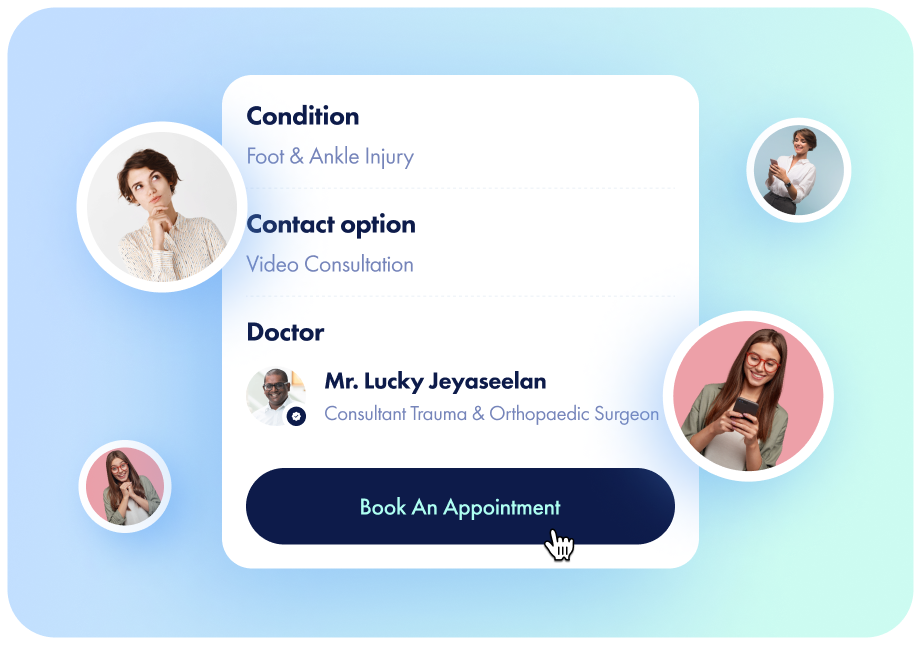
Conveniently reserve your spot with just a few clicks through our easy-to-use online booking system.

Tennis elbow, also known as lateral epicondylitis, is a painful condition affecting the tendons on the outer portion of the elbow. It's caused by overuse of the forearm muscles.
You are not required to provide a referral letter from your doctor or GP.
Start a visit quickly and discreetly whenever works best for you.
Our doctors review symptoms, prescribe treatments if needed.
Proceed with your healthcare journey as you wish. You're in control.
You control medical records, access anytime.
Diagnosing tennis elbow generally starts with a thorough physical examination by your healthcare provider. They will assess the pain's location and the activities that aggravate it.
In some cases, additional tests may be necessary to rule out other conditions and to gauge the severity of the tendon damage. These tests might include:
This can reveal if arthritis is present in your elbow or rule out other bone-related conditions.
An MRI can provide a detailed view of the tendons around your elbow and check for severe tendon damage. It can also identify issues in your neck or spine that might contribute to your arm pain.
This test can determine if nerve problems cause your elbow pain.
Understanding the precise cause of your symptoms is vital for an effective treatment plan.
Сontact us to schedule an appointment or learn more
Conveniently reserve your spot with just a few clicks through our easy-to-use online booking system.
Have a question or request? Drop us a message, and our team will get back to you promptly.
Feel free to give us a call, and our friendly staff will be glad to assist you over the phone.
Treating tennis elbow effectively often involves a blend of methods, tailored to your specific needs and the severity of your condition. The goal is to alleviate pain, promote healing, and restore function.
In many cases, tennis elbow gradually improves on its own. Key to this natural recovery is giving your arm proper rest and avoiding activities that exacerbate the pain. Over-the-counter pain relievers like ibuprofen can help manage discomfort. Applying ice packs several times a day can also reduce swelling and soothe pain.
Physical therapy may also play a crucial role in recovery. A therapist can guide you through exercises for tennis elbow that strengthen forearm muscles and tendons. Sometimes, using a forearm strap or brace can alleviate stress on the injured area, promoting healing.
If conservative treatments don't bring relief, more invasive options may be considered:
This includes corticosteroids or platelet-rich plasma injections into the affected tendon.
This involves piercing the damaged tendon with a needle to stimulate healing.
This non-invasive treatment sends shock waves to the injured tissue to reduce pain and promote healing.
If symptoms persist beyond 6 to 12 months, surgery to remove damaged tissue may be necessary. This could be open surgery or arthroscopic.
Post-treatment rehabilitation exercises are crucial to regain strength and functionality in your elbow. The duration of recovery from tennis elbow can vary, typically lasting from 6 months to 2 years, with most individuals fully recovering within a year. Your healthcare provider can offer personalised advice on recovery timelines.
Living with tennis elbow requires a balance of rest and specific exercises.
Gentle stretching and strengthening exercises can help. Pay attention to your daily activities; modifying tasks that strain your elbow is crucial. Ergonomic adjustments, especially if you work at a computer, can significantly reduce stress on your forearm.
Remember, prevention is key—regular breaks and proper technique during activities help prevent the recurrence of tennis elbow.
From Home or Face to Face, all at your convenience
Schedule a Video Consultation or a Face-to-Face appointment at your convenience by using our online booking system.
Speak with a Specialist
Schedule a Video Consultation or a Face-to-Face appointment at your convenience by using our online booking system.
Get a Personalised Treatment Plan
Your dedicated Specialist Doctor will provide you with personalized treatment, tailoring it to your specific needs, and may include necessary medication.
Don't let tennis elbow dictate your life. Our London clinic specialises in comprehensive care and personalised private tennis elbow treatment.
Take the first step towards recovery and improved quality of life by scheduling a consultation with our experts today. We're here to guide you on your journey to relief and recovery.
















